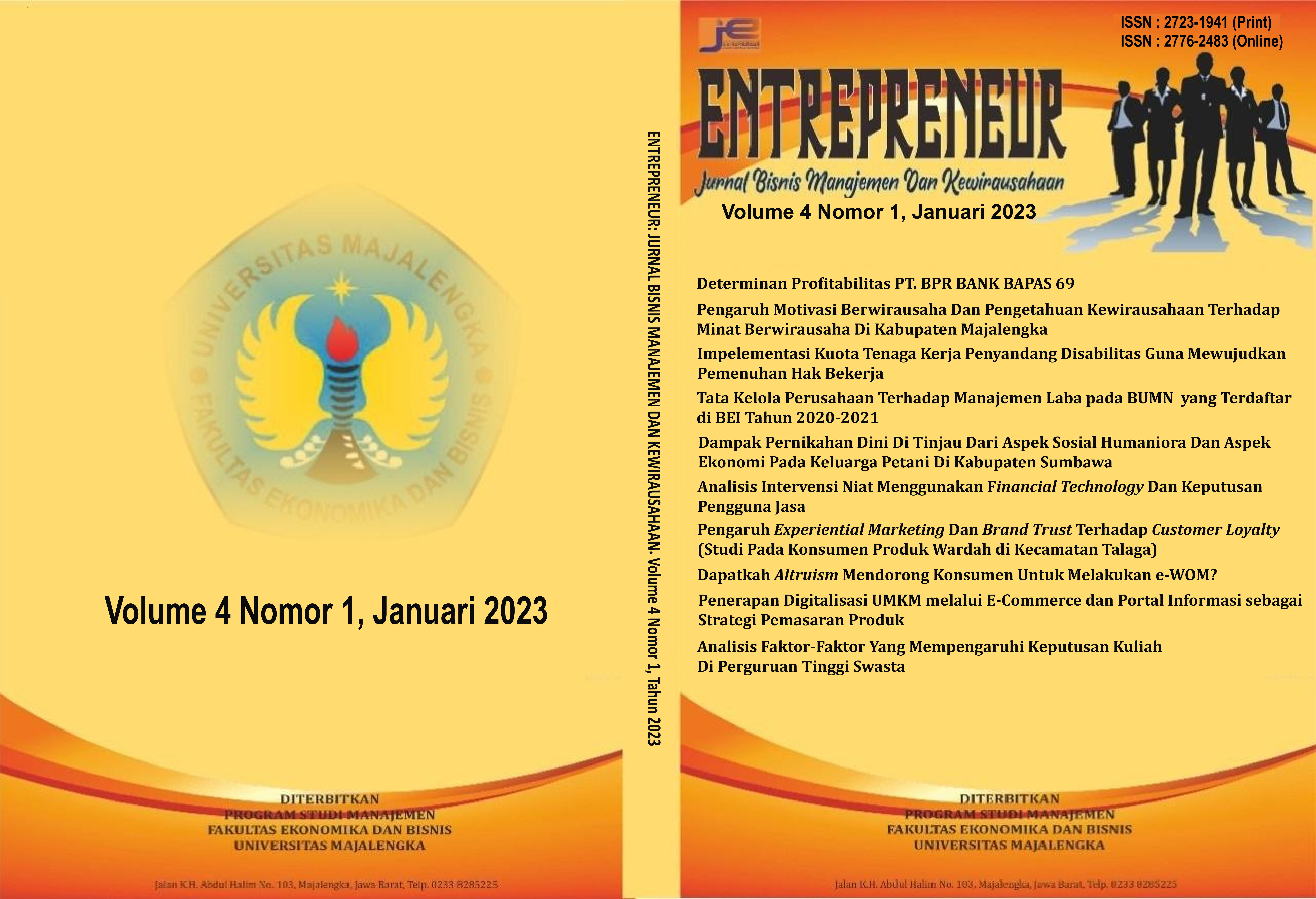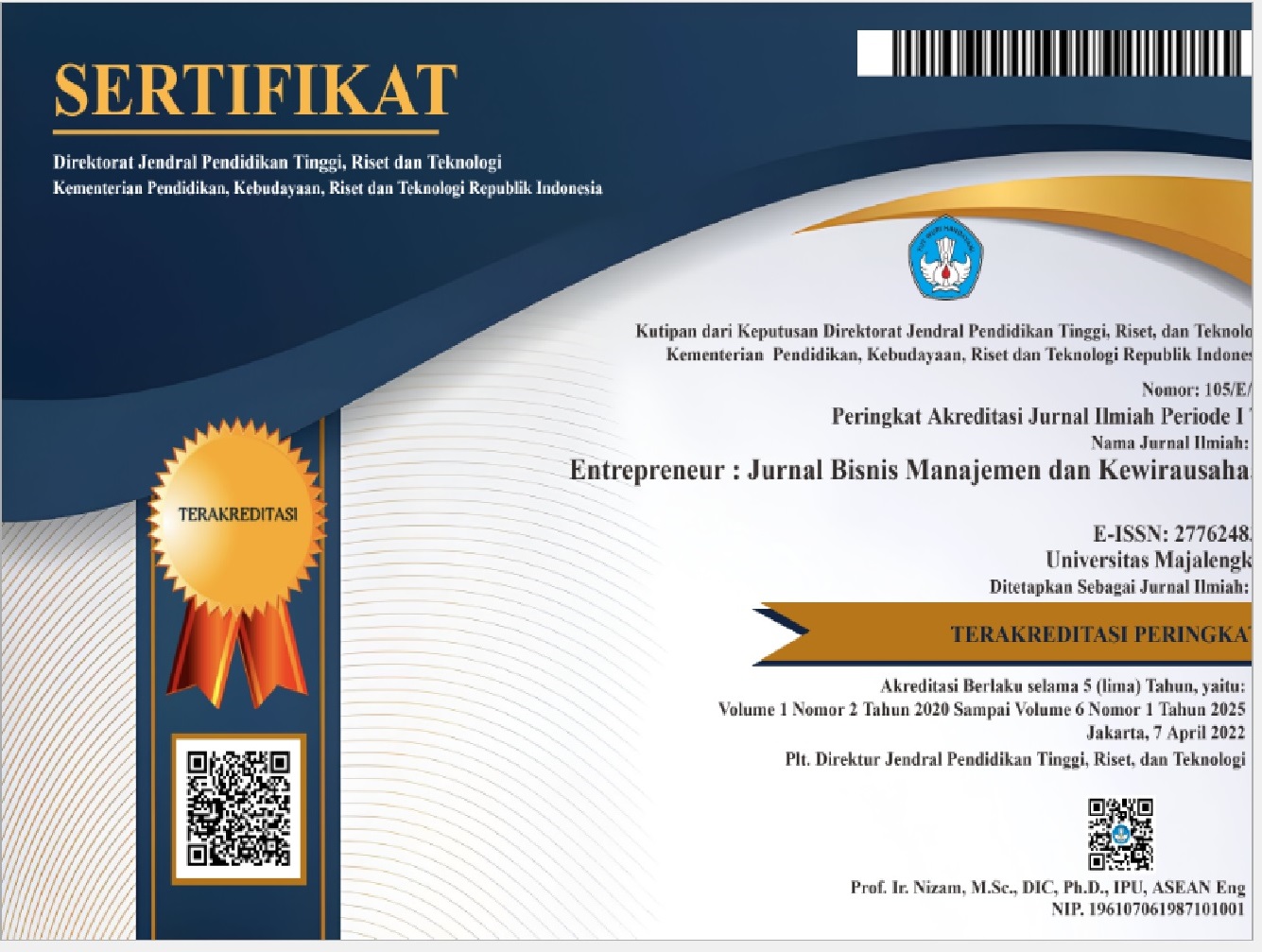The Impact of Early Marriage in Review from the Social, Humanities and Economic Aspects of Farmer Families in Sumbawa Regency
The Impact of Early Marriage in Review from the Social, Humanities and Economic Aspects of Farmer Families in Sumbawa Regency
DOI:
https://doi.org/10.31949/entrepreneur.v4i1.3478Abstract
The issue of early marriage is important to note. Based on data from the Sumbawa Regency Religious Court, there are at least more than 20 cases of underage marriages that occurred within two months, namely the January-February 2022 period. Worse yet, most of them are known to be pregnant out of wedlock. The research method is a qualitative method with the aim of digging deeper into information related to early marriage in terms of social, humanities and economic aspects. This research is limited to farmer families in Sumbawa Regency, this is because the average community in Sumbawa Regency has a job as a farmer. The research location was determined by purposive sampling, namely in Labuhan Badas District with the consideration that most of the population still depend on the agricultural sector and cases of early marriage have increased. Data analysis techniques are data reduction, data presentation, conclusion drawing and verification. The results of the study indicate that the low understanding of parents both from the social humanities aspect and the lack of opportunities in the economic field due to the low human resources and the high level of poverty cause early marriages to occur frequently, the impact is the high divorce rate. Mentally they are not ready and economically they are not able.
Keywords:
Covid-19; Creative Economy; Social Entrepreneurship; Waste BankDownloads
References
Adriana D. (2011). Tumbuh Kembang dan Terapi Bermain pada Anak. Jakarta: Salemba Medika
Ari. (2014). Faktor Penyebab Pernikahan Dini. https://genbagus.blogspot.com/2014/05/faktor-penyebab-pernikahan-dini.html
Anindyaputri, I. (2017). Memahami Dampak Psikologis dari Pernikahan Usia Remaja.https://hellosehat.com/mental/hubungan-harmonis/dampak-psikologis-pernikahan-usia-remaja/
Bastomi, Hasan. 2016. Tinjauan Batas Umur Perkawinan Menurut Hukum Islam dan Hukum Perkawinan Indinesia. Yudisia
Jurnal Pemikiran Hukum dan Hukum Islam, Vol. 7, No. 2, Desember, hlm. 354-384. https://journal.iainkudus.ac.id/index.php/Yudisia/article/view/2160/1788
Dariyo, A. (2003). Psikologi Perkembangan Dewasa Muda. Jakarta: Grasindo
Erikson, E. H. (1950). Childhood and society. New York: Norton
Handayani, Eka Yuli. 2014. “Faktor-Faktor Yang Berhubungan Dengan Pernikahan Usia Dini Pada Remaja Putri di Kecamatan Tambusai Utara Kabupaten Rokan Hulu”, Jurnal Maternity and Neonatal, Volume 1 No. 5, hlm. 200- 206.
Indrianingsih, Ira., Nurafifah, Fitri dan Januarti, Lusi (2020) Analisis Dampak Pernikahan Usia Dini Dan Upaya Pencegahan Di Desa Janapria. Jurnal Warta Desa (JWD). VL - 2. SP - 16. EP - 26. TY - JOUR. PY - 2020/05/11. DO - 10.29303/jwd.v2i1.88
Miles, M. B., & Huberman, A. M. (1984). Qualitative data analysis. London: Sage.
Muhammad, Amin Suma (2005). Hukum Keluarga Islam di Dunia Islam, Rajawali Press.
Sarlito, W. S. (2012). Psikologi Remaja. Jakarta: Kharisma Putra Utama Offset.

Published
How to Cite
Issue
Section
License
Copyright (c) 2023 Noviana

This work is licensed under a Creative Commons Attribution-ShareAlike 4.0 International License.
COPYRIGHT NOTICE
An author who publishes in the Entrepreneur: Jurnal Bisnis Manajemen dan Kewirausahaan agrees to the following terms:
1. Author retains the copyright and grants the journal the right of first publication of the work simultaneously licensed under the Creative Commons Attribution-ShareAlike 4.0 License that allows others to share the work with an acknowledgment of the work's authorship and initial publication in this journal
2. The author is able to enter into separate, additional contractual arrangements for the non-exclusive distribution of the journal's published version of the work (e.g., post it to an institutional repository or publish it in a book) with the acknowledgment of its initial publication in this journal.
3. The author is permitted and encouraged to post his/her work online (e.g., in institutional repositories or on their website) prior to and during the submission process, as it can lead to productive exchanges, as well as earlier and greater citation of the published work







